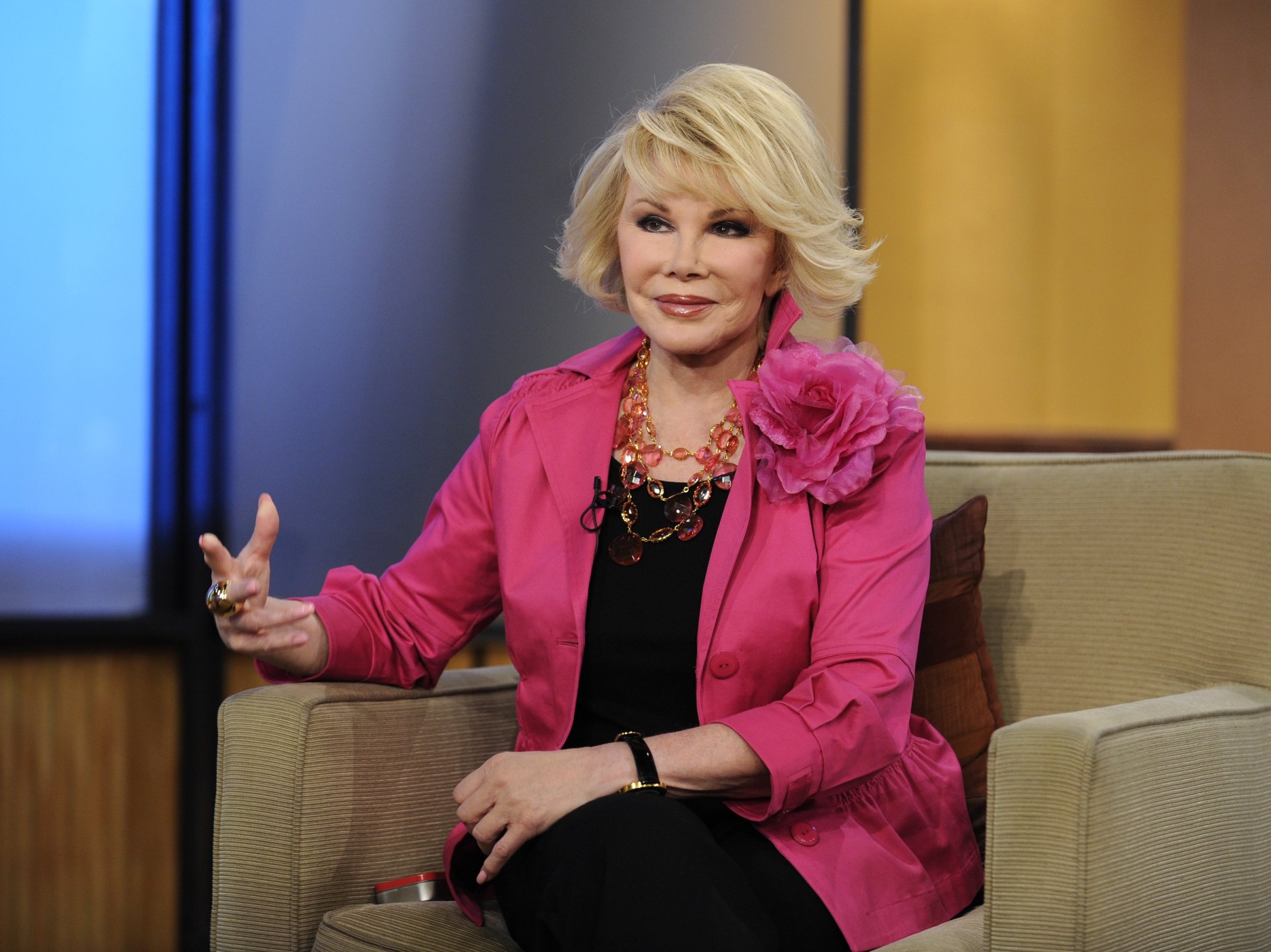
“If you have reached the top in comedy, you are, in your own way, a killer,” Joan Rivers said in her 1986 autobiography, Enter Talking. “The anger is never out of you.”
The anger was on display nearly to the end — when she stormed out of a recent CNN interview after the dippy host threw too many contentious questions her way. She was promoting a book called Diary of a Mad Diva, but Rivers was one entertainer who took the stigma out of divadom. Yes, she was brassy, aggressive, often politically incorrect, and terribly thin-skinned — but they were the war wounds of a woman who battled to make it in a man’s world, at a time when few women were even trying. As a comedian she was sui generis, a true pioneer who never quite got the recognition she deserved. Until, naturally, she left us.
She was born Joan Molinsky, the daughter of a doctor in Larchmont, N.Y., and graduated from Barnard in 1954. Her family was appalled when she began moonlighting as a stand-up comic in between secretarial jobs. Not too many others were cheering, either. She worked strip joints (under the stage name Pepper January), did a stint at Chicago’s Second City, and was part of a sketch-comedy trio called Jim, Jake and Joan, before she began to develop her own style.
She had no women to use as role models. The few successful female stand-up comics at the time were people like Phyllis Diller, who did jokebook gags poking fun at her fright-haired looks and ineptness as a housewife. Rivers put herself down too, but her comedy was much more grounded in her own reality and insecurities as a Jewish American princess from the suburbs. “I’m the last single gal in Larchmont,” she joked. “My mother’s desperate. She has a sign up: ‘Last Girl Before Thruway.'”
Her chief inspiration was Lenny Bruce, who showed her that stand-up comedians could tell the truth. “He was so beyond anything else at the time,” she said. “I thought, he’s saying what I’m thinking.” “Can we talk?” became her catchphrase, a signal that she was out to break taboos, tell uncomfortable truths — talking about her gay hairdresser, or her affair with a married professor in college, or Queen Elizabeth’s dowdy wardrobe.
She worked the Greenwich Village clubs but couldn’t get noticed. Jack Lemmon came to see her at the Duplex and walked out. She watched in dismay as fellow Village comics like Bill Cosby and George Carlin broke through on national TV while she still struggled. Her agent told her she was too old to make it — past 30. It was Lenny Bruce himself who gave her the courage to continue. After catching her act at a Village club, he left her a note: “You’re right and they’re wrong.”
Johnny Carson came to her rescue. After auditioning seven times unsuccessfully for his Tonight Show, she made her first guest appearance in February 1965. Carson loved her, and asked her back eight more times in the next eight months. Suddenly she was getting booked into top clubs like the Bitter End and the hungry i; more TV appearances and Las Vegas gigs followed. The New York Times compared her to Woody Allen and called her “a prime example of what’s new in comedy.”
But she wasn’t new for long. Rivers had the bad timing to break through just before the women’s movement really took hold. By the late 1960s, when she was the hottest female comic in America, her desperate-for-a-man jokes were already sounding dated. The women who began to emerge in the comedy clubs of the 1970s — Elayne Boosler, Paula Poundstone, Sandra Bernhard, Roseanne Barr — rejected Rivers’ self-deprecating, pre-feminist comedy. They were loud, proud — and most definitely not Joan Rivers.
Rivers never quite got over the snub. It fueled her defensiveness, the increasingly hard edge of her put-down comedy, her penchant for getting into high-profile scrapes — like her famous falling out with Carson, after she left him to start her own late-night show in 1986. The show turned out to be a disaster for her, both professionally and personally: Carson never spoke to her again, the show was cancelled within a year, and her husband and manager, Edgar Rosenberg, was so broken by the experience that he committed suicide.
But she was resilient, and indefatigable. She reemerged as a popular daytime TV host, became the nation’s most famous red-carpet fashion queen, hawked jewelry on QVC, even allowed herself to be abused by Donald Trump on Celebrity Apprentice. Through it all, she continued to do stand-up, taking potshots at the high and mighty, occasionally apologizing for going too far — and, always, working, working, working. By the end she wasn’t just a pioneer; she was a survivor.
Richard Zoglin is author of Comedy at the Edge: How Stand-up in the 1970s Changed America (Bloomsbury, 2008).
More Must-Reads from TIME
- Cybersecurity Experts Are Sounding the Alarm on DOGE
- Meet the 2025 Women of the Year
- The Harsh Truth About Disability Inclusion
- Why Do More Young Adults Have Cancer?
- Colman Domingo Leads With Radical Love
- How to Get Better at Doing Things Alone
- Michelle Zauner Stares Down the Darkness
Contact us at letters@time.com